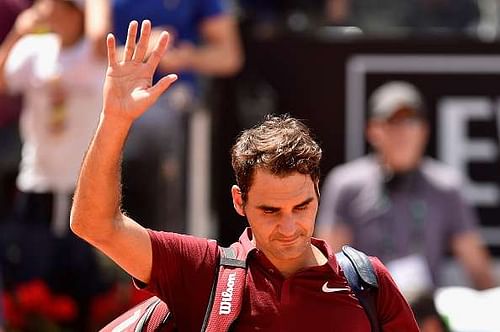
Roger Federer on break till 2017: How will that change his ranking?
Swiss ace Roger Federer, who had been due to play at the Olympic Games and the US Open this year, announced last week that he would not be playing competitive tennis for the remainder of 2016 following a number of injuries that have seriously affected his game this year.
Federer began the year with a back injury, later hampered by knee injuries that saw him sit out a number of tournaments in quick succession.
The 34-year-old put up nothing short of a blockbuster performance at Wimbledon this year. Stretched to five sets in his quarter-finals against Croat ace Marin Cilic, who held match point on multiple occasions, it was seven-time Wimbledon champion Federer who came out victorious.
Then again, he was taken to the edge by Canadian ace Milos Raonic, who, in his defeat of Federer made history as the first Canadian man to make a Grand Slam final.
During his match against Raonic, Federer rolled his ankle and took a spill on court – one that did not stop him from continuing the match, but one he discussed in the press conference aftewards as ‘nothing like he had ever felt before.’
Fans had expected to see the Swiss return in time for the Olympic games, perhaps Federer’s last. But that was not to be, with Federer announcing he will not play any tournaments until 2017.
Currently the World No. 3, Federer will see a definite drop in the rankings, likely out of the top 10.
Over his tournaments in 2016, including a number of finals, Federer earned 2130 ATP points. The Swiss is currently at 5,495 ahead of Rafael Nadal, who, barring any major injuries for the Spaniard, should surpass him in the rankings fairly quickly.
On the basis of the points he has earned this year, he will be placed at 16th - just behind Frenchman Richard Gasquet, who has 2365 points, and American John Isner, with 2100. Both Gasquet and Isner have been in decent form this year, meaning that the pair will both earn a fair number of points – enough, perhaps, for a rise over higher-ranked competitors, although given the form of the top-20, most have been consistent enough to be able to maintain their rankings.
Federer had promised a 2017 return, due to play at the team Hopman Cup in Australia in January. Unfortunately, that means he will miss out on an opportunity for more significant, and crucial points opportunity at the year-opening Brisbane International. Federer was a finalist at that event this year, losing out to at the time to eventual title winner and Wimbledon rival Milos Raonic.
Should Federer’s return to competitive play be delayed until the first Grand Slam of the year – the Australian Open, he could be eligible for a protected ranking.
Players who are sidelined by injuries for over six months are eligible for the protected ranking (PR) system, which means that their average ranking during the first three months of their injury is applied for them to enter the main draws of tournaments upon return from injury.
This protected ranking, however, is not applicable endlessly and can only be used by a player for a number of tournaments before they must return to their actual rankings on the ATP or WTA leaderboard.
Several fans have believed that this is perhaps the final hurrah from arguably the greatest player the sport has ever seen, not just in terms of titles but sheer skill and finesse.
In a testament to that skill, it has been 14 years since Federer was outside the top 10 in the ATP rankings. Even then, in October 2002, the Swiss was at a respectably high 13th.
Meniscus injuries, such as the one Federer is currently battling, are notoriously difficult to deal with. Given Federer’s longevity and mental commitment to what he describes as “many more years of tennis to come,” could he come back?
It is not unheard of. Many players have returned to competition years after injury – among them Federer himself, following his earliest surgery.
Among the most significant strugglers in the current ATP crop is the man who has perhaps been Federer’s nemesis on the circuit this year – 25-year-old Milos Raonic, who many had written off in his early days following injuries and a significant drop in the ATP rankings. Raonic has currently managed to claw himself back into the top 10, sitting comfortably at 7th with a strong start to the year, winning a title in Brisbane and continuing on an upward graph from then on.
US Open and Olympic medal winner Juan Martin Del Potro has also had well-documented injury issues and a much-publicized return to tennis. Unseeded at Wimbledon this year, Del Potro beat two-time Grand Slam winner and top seed Stan Wawrinka before crashing out himself.
It is more than possible that Federer will come back with the same fighting spirit he has shown throughout his career. But given his age and the gravity of injuries, the magnitude of that comeback may be uncertain.
